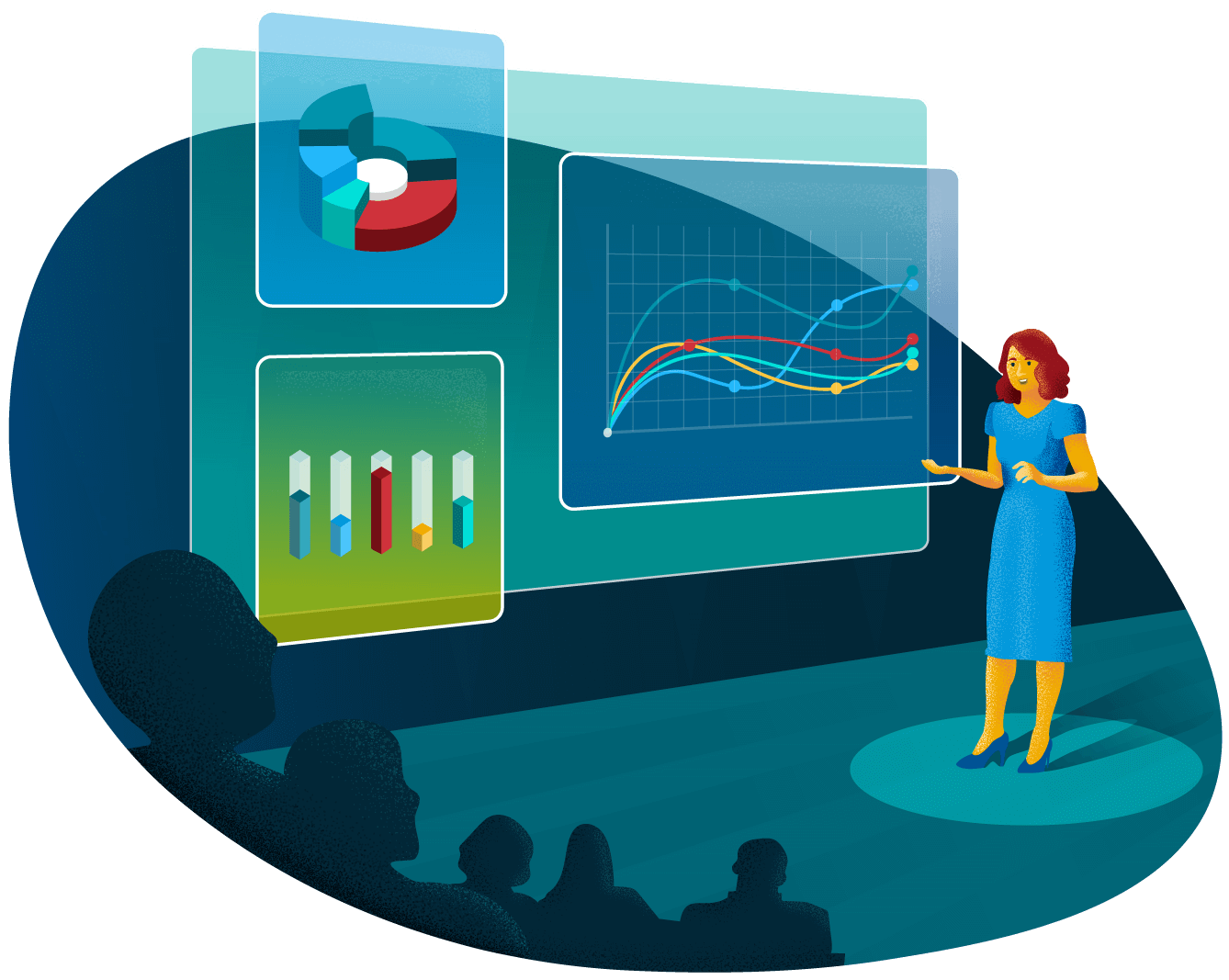Frequently asked questions (FAQs)
Find answers to the most common questions on charitable giving, donor-advised funds, and taxes.1
Do I qualify for a charitable tax deduction?
Standard vs. itemized deductions
To receive a charitable tax deduction on your annual income taxes, you must itemize your deductions rather than choosing to take the standard deduction.
How much of a charitable tax deduction can I take?
In a given year, you may take charitable deductions up to a limit that is calculated according to your Adjusted Gross Income2 (AGI) and the type of asset that you are donating. AGI limitations are typically set at 60% for cash donations and 30% for donations of appreciated assets.
Charitable giving that exceeds an individual’s AGI limitation may be carried forward and used over the next five years. This carryforward provision is a helpful tool as you engage in strategic, long-term charitable giving.
How valuable is my charitable tax deduction?
Marginal tax rate
In the U.S., taxpayers fall into federal marginal tax brackets based on income, which dictates the amount of federal taxes owed. As income increases, we are pushed into a higher tax bracket and owe a higher tax rate. The marginal tax bracket is the highest tax bracket that applies to you. Your overall tax rate is the “effective tax rate.” It will be lower than the marginal tax rate because you are taxed only on the amount of income that falls into the highest tax bracket.
Currently, tax rates can be as low as 10% or as high as 37%, and taxes are tallied according to each bracket you exceed. In general, the higher your marginal tax rate, the more valuable making charitable donations will be, as your charitable deduction will allow you to avoid paying your marginal tax rate5 on the income that you donate. Charitable deductions can also help lower your marginal tax rate by reducing the amount of taxable income or even pushing you back into a lower bracket.
2025 tax brackets (for taxes due April 15, 2026)4
| Rate | For unmarried individuals, taxable income over | For married individuals filing joint returns, taxable income over | For heads of households, taxable income over |
|---|---|---|---|
| 10% | $0 | $0 | $0 |
| 12% | $11,925 | $23,850 | $17,000 |
| 22% | $48,475 | $96,950 | $64,850 |
| 24% | $103,350 | $206,700 | $103,350 |
| 32% | $197,300 | $394,600 | $197,300 |
| 35% | $250,525 | $501,050 | $250,500 |
| 37% | $626,350 | $751,600 | $626,350 |
What are capital gains taxes?
We can’t talk about donating charitable assets without discussing the capital gains tax. A capital gains tax is a tax applied on the profit made from selling certain types of assets. A capital gain is calculated by subtracting the original cost of the asset from the total sale price.
The capital gain, or the profit, is assessed a tax when you sell the asset. The amount of tax you pay can vary. It may depend on how long the asset was held, if it’s a charitable donation, the fair market value of the asset, and its cost basis. Some of the more common assets subject to this tax are stocks, bonds, real estate, private equity, and other appreciated assets.
Short-term vs. long-term capital gains
Because the amount of tax depends on how long you’ve held the asset, capital gains are classified as either long-term (held for more than one year) or short-term (held for a year or less).
Short-term capital gains are considered ordinary income and are taxed based on your marginal tax rate5, which can be as high as 37%. Long-term capital gains are most often a flat rate of 0%, 15% or 20%. Holding on to an asset longer than a year almost always results in a lower capital gains tax.
Long-term capital gains tax rates for the 2025 tax year4
| Filing Status | 0% Rate | 15% Rate | 20% Rate |
|---|---|---|---|
| Single | Up to $48,350 | $48,351 – $533,400 | Over $533,400 |
| Married filing jointly | Up to $96,700 | $96,701 – $600,050 | Over $600,050 |
| Married filing separately | Up to $48,350 | $48,351 – $300,000 | Over $300,000 |
| Head of household | Up to $64,750 | $64,751 – $566,700 | Over $566,700 |
How can I reduce capital gains by giving to charity?
Contributing assets to your DAF account can help off-set capital gains taxes. Donating appreciated assets (held for longer than one year) gives you an added advantage because you gain a deduction for the full fair market value (FMV) of the asset but neither you nor the charity that receives the asset is taxed on the appreciation because the charity is tax-exempt. It’s a double tax benefit that would not be available if you were donating cash. Mixing and matching the assets you donate can maximize your giving—and your tax benefits. Learn more about the advantages of donating appreciated securities and complex assets.
What’s the difference between fair market value vs. cost basis?
The FMV is the price at which your asset should sell in the current market. Cost basis is the original value of an asset, usually the purchase price. When calculating cost basis, the amount may be adjusted for stock splits, dividends, and return of capital distributions.
Both FMV and cost basis are used by the IRS to determine capital gains, which is the difference between the asset's cost basis and the FMV at the time of liquidation. These measures are also used when an asset is donated to charity to determine the correct amount of tax deduction. Donors may be asked to provide an independent estimate for the value of the asset, which is known as the appraised value.
How can I reduce estate tax?
Including your DAF account in your estate planning means you can remove assets from your estate before the total value is taxed. If your estate plan makes gifts to charities via your DAF account, the estate could be taxed less. Because charitable tax strategies for estate planning can be among the most complex, be sure to consult an estate planner or other qualified expert.
Tax Strategies
Get tips for planning how your charitable giving can support your overall tax strategy.
How to value your contribution
Review the gift valuation guidelines as set by current tax regulations to understand the value of your DAF contribution.
Value your contributionCharitable tax deductions
Discover the answers to all your charitable tax deductions here to maximize the benefits of giving.
Maximize your deductionBenefits of donating complex assets
See why donating complex assets like private equity can lead to double the benefits.
Download InfographicTax-free growth of invested charitable assets
 When assets are contributed to a DAF account, the funds can only be used for charitable giving and those funds are invested for tax-free growth. This is a very appealing option for charitable-minded, investment-focused donors who want to make an impact. When the charitable dollars are invested for tax-free growth, there may be more to give to the causes you care about. This allows for both granting and growing. It’s this growth—combined with our industry-low fees—that makes the difference.
When assets are contributed to a DAF account, the funds can only be used for charitable giving and those funds are invested for tax-free growth. This is a very appealing option for charitable-minded, investment-focused donors who want to make an impact. When the charitable dollars are invested for tax-free growth, there may be more to give to the causes you care about. This allows for both granting and growing. It’s this growth—combined with our industry-low fees—that makes the difference.
Tax Calculator
Let us help you assess how a charitable contribution may impact your tax liability.
News
Get the latest updates around taxes and these updates' impact on charitable giving.
2025 budget reconciliation bill
Learn how the One Big Beautiful Bill Act (OBBBA) extends the Tax Cuts and Jobs Act while updating provisions that could impact charitable giving.
Plan your tax strategy with the benefits of a DAF
Donor-advised funds weren't directly named or impacted by the OBBBA. In this tax environment, they continue to provide donors with significant tax advantages over other giving methods.
Donate appreciated securities
Maximize tax benefits and charitable impact when you donate appreciated securities. Review the case study here.
Footnotes
1Please note: The information provided here is not intended to be relied upon in lieu of tax or legal advice. Consult with a tax advisor or attorney for information related to your specific situation.
2AGI: Adjusted gross income is an individual's total gross income minus specific deductions. AGI is used to calculate taxable income, which is AGI minus allowances for personal exemptions and itemized deductions.
3Please note that the CARES Act expired at the end of 2021.
4Internal Revenue Service
5Internal Revenue Service. Publication 550: Investment Income and Expenses, Page 43. Accessed Jan. 13, 2021.
Are you ready to experience the highest-value donor-advised fund?
We make opening an account and donating assets easy. Our secure, online portal walks you through each step.

Maintenance fee may be applied
Accounts having a balance below $25,000 may be subject to an annual maintenance fee of $250.
You are eligible for special rates
Our premier clients enjoy reduced pricing to further maximize their impact.
Our representatives are happy to guide you through.


